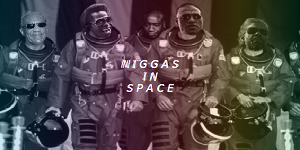https://books.google.com/books?id=1AJJCgAAQBAJ&pg=PA244&lpg=PA244&dq=william+braud+dmils+san+antonio+tx&source=bl&ots=uSLAi5IOfb&sig=ACfU3U1buZ87MA-wg43DD8f_n1F7BshxSw&hl=en&sa=X&ved=2ahUKEwick7r63d_jAhVDWq0KHQx5C04Q6AEwB3oECAgQAQ#v=onepage&q=william%20braud%20dmils%20san%20antonio%20tx&f=falseEDIT: I met an Australian author of books like this, but he gave up on it, because he thinks nobody is interested in the subjects. It's partially true, people either tend to not believe it or it's too confusing for them. I couldn't really talk to the guy long I think he was paranoid about being partly famous. But I could've argued with him on the subject, I knew an awful lot more about it than he does. And I'm not an author.
As the observed participant has no knowledge of the observation schedule,
no differences would be expected between the two conditions. The remote staring
paradigm investigates whether humans can detect someone staring at them. This idea is
derived from a ‘feeling of being stared at’ which is well known from everyday
experience. This phenomenon has already been researched by individual authors
(e.g. Colwell, Schro¨der, & Sladen, 2000; Schwartz & Russek, 1999; Sheldrake, 1998,
1999, 2000, 2001a), and the results have evoked some controversy (Baker, 2001;
Marks & Colwell, 2001; Schmidt, 2001; Sheldrake, 2001b). The remote staring paradigm
is special in its set-up in that it uses video equipment and takes as the dependent variable
a physiological indicator of arousal rather than a self-report.
In an overall review, Schlitz and Braud (1997) report the results of 19 direct mental
interaction studies with a total of 417 sessions. These show a mean effect size of r ¼ :25
(Rosenthal’s r) with 37% of the studies being independently significant. The authors also
present data for remote staring studies with the same mean effect size ðr ¼ :25Þ for 11
studies with 241 sessions, with 64% yielding significant results. The overall significance
for the two data sets calculated using the Stouffer Z method was p ¼ :0000007
(direct mental interaction) and p ¼ :000054 (remote staring), respectively.
One could conclude that the data indicate the existence of some as yet unknown
effect of distant intentionality. Our goal was to assess whether this strong claim can
stand up to critical evaluation from a sceptical perspective. We also wished to include
new data in our evaluation, as a substantial number of direct mental interaction
experiments have been conducted since the previous review.
And the conclusion:
We conclude that for both data sets that there is a small, but significant effect. This result
corresponds to the recent findings of studies on distant healing and the ‘feeling of being
stared at’. Therefore, the existence of some anomaly related to distant intentions cannot
be ruled out. The lack of methodological rigour in the existing database prohibits final
conclusions and calls for further research, especially for independent replications on
larger data sets. There is no specific theoretical conception we know of that can
incorporate this phenomenon into the current body of scientific knowledge. Thus,
theoretical research allowing for and describing plausible mechanisms for such effects is
necessary
Some pedantic jackass will always find that the data collect isn't to his liking, he won't be satisfied and remains a skeptic. That's fine. I have actually seen this stuff in person, I have done it. I can repeatedly stare at someone and induce different emotions in them, making them change direction, etc.
EDIT:
The aim of the influence is to either calm, activate, or not influence
the distant subject according to a prearranged random schedule.
During calming attempts, the influencer relaxes and calms himself or
herself, intends and gently wishes for the subject to become calm,
and visualizes or imagines the subject in a relaxing, calming setting.
During activation attempts, the influencer tenses his or her own body,
intends and wishes for the subject to become more active, and images
the subject in activating, energizing or arousing settings and situations.
During the noninfluence control periods, the influencer attempts to
keep his or her mind off of the subject and to think about matters
unrelated to the experiment. The influencers may use the polygraph
tracings as feedback to indicate how well their influence attempts are
Keep in mind these are random people that aren't actually very good at this stuff. You put someone like me or some of the people I know in these experiments and people are going to freak out at the results.
I've gotten good at remotely messing with motors by hearing them. This shit works on anything living or non living. Doesn't matter what it is. The size also doesn't matter much as it works on planes and cars too. Trains are somewhat more difficult to mess with. I don't like using it on people. Sometimes it's an unconscious reflex, you'll see a girl crossing the street and she's about to get hit by a car, you twitch, or whip your head towards her, or squint your eyes, and she stops, milliseconds before getting smashed by a car, and she has no idea why. It's like an act of god sometimes.
EDIT: Humans and other life forms also have the ability to affect probability and the research on this is pretty good too. How likely a dice will land on a certain number, in other words, how likely an event is to happen. That's where it gets even more strange I think. Magic makes use of this ability.
EDIT2: Since they used faraday cages/shields, and couldn't pinpoint an electromagnetic frequency responsible for these effects, my conclusion may be that it works because all is mind, all is one. The distance between any one object or person and another is an illusion. When you affect another person or an object, you're affecting part of yourself.

